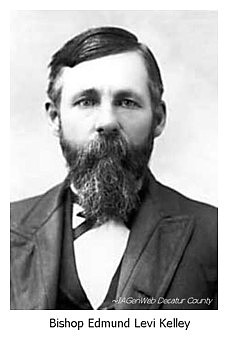

KELLEY HALLGraceland College, Lamoni, Iowa |
 |
|
In October of 1947, a wooden classroom was built to accommodate the
influx of veterans who enrolled at Graceland upon the conclusion of
World War II. Originally the building contained a large lecture room,
two smaller classrooms and six faculty offices. The building was
constructed so that a brick veneer could be applied at a later time,
which never was done. Kelley Hall initially was a World War II surplus building that came from Jefferson Barracks in St. Louis, Missouri. The U.S. Congress had passed a bill providing cost and construction of temporary facilities for veteran needs at up to $3 per square foot. This financed the location and transportation of the building to the campus and Graceland covered the estimated $5,000 construction costs. The materials arrived on August 23, 1947 through the Federal Works Agency.  On
September 17, 1947, the Tower announced that it was sponsoring a “name
the building contest” from September 26 to October 15. Judges for the
contest were chairman of the entries committee Ronald Manuel,
Publications Board chairman Wallace Smith, Graceland president Edmund J.
Gleazer, public relations R. Edwin Browne, student council
representative Joe Piedimonte, faculty member Eugene E. Closson alumni
representative Mrs. Charles Hyde and Tower staff member Stan Johnson.
The contest winner would receive a semester pass for every movie shown
between October 19 to January 30 at the Coliseum that year. Runner-up
would receive a Graceland pennant. On
September 17, 1947, the Tower announced that it was sponsoring a “name
the building contest” from September 26 to October 15. Judges for the
contest were chairman of the entries committee Ronald Manuel,
Publications Board chairman Wallace Smith, Graceland president Edmund J.
Gleazer, public relations R. Edwin Browne, student council
representative Joe Piedimonte, faculty member Eugene E. Closson alumni
representative Mrs. Charles Hyde and Tower staff member Stan Johnson.
The contest winner would receive a semester pass for every movie shown
between October 19 to January 30 at the Coliseum that year. Runner-up
would receive a Graceland pennant.The winners were announced in the October 17th homecoming issue of the Tower, naming first-place to Raymond Gunn who submitted the name Progress Hall, and runner-up to Shirley Robinson who submitted the name Stewards Hall. The Board of Trustees opted to name the new building “Kelley Hall” in recognition of Bishop Edmund L. Kelley, a member of Graceland's original Board of Directors and an ardent supporter of the college during its early years when it struggled to survive hard times. Kelley Hall became the visual arts department and a ceramics room was equipped with a kiln in the summer of 1963, allowing the addition of a new class in ceramics. In March of 1979, a prefabricated metal addition was added to the south side at a cost which exceeded $19,000. Kelley Hall stood directly east of the Closson Center. It was torn down some time around the year 2013. |
|
SOURCE: Goehner, David. “The Graceland College Book of Knowledge:
From A To Z.” p. 185. Herald House. Independence MO. 1997. Submission by
Sharon R. Becker, February 2017. NOTE: Graceland University expressly granted permission to Decatur County IAGenWeb to use photographs and materials for the sole purpose of this website. Please, extend courtesy toward Graceland University and Decatur County IAGenWeb ~ ask before you "borrow" from this site. Thank you. These pages have been updated and reformatted by Conni McDaniel Hall, October 2019 |
| Graceland University *** Schools Directory *** Decatur County IAGenWeb |